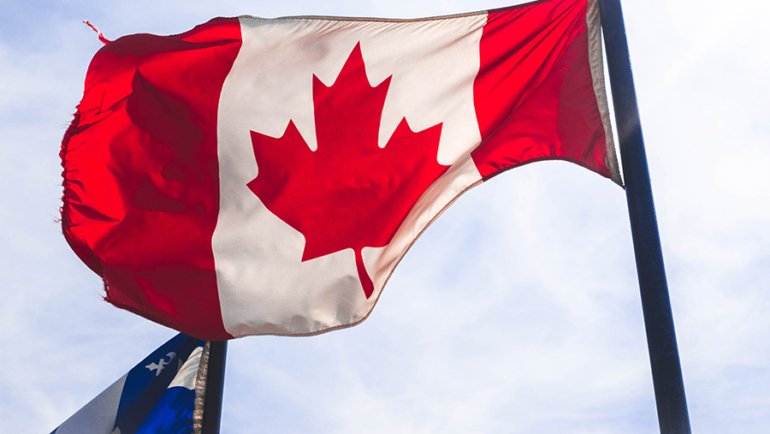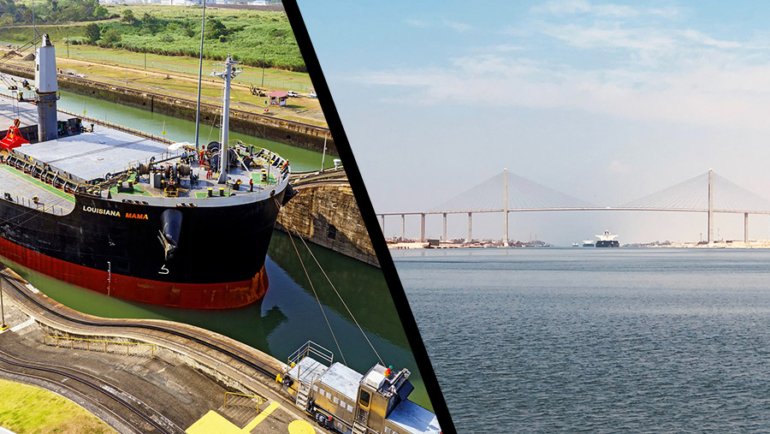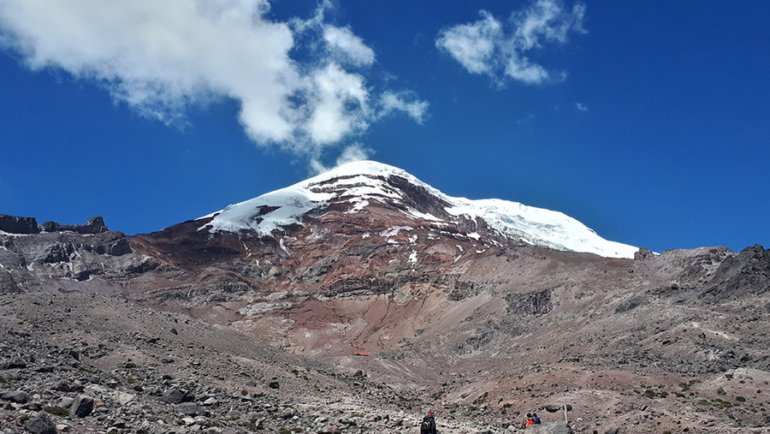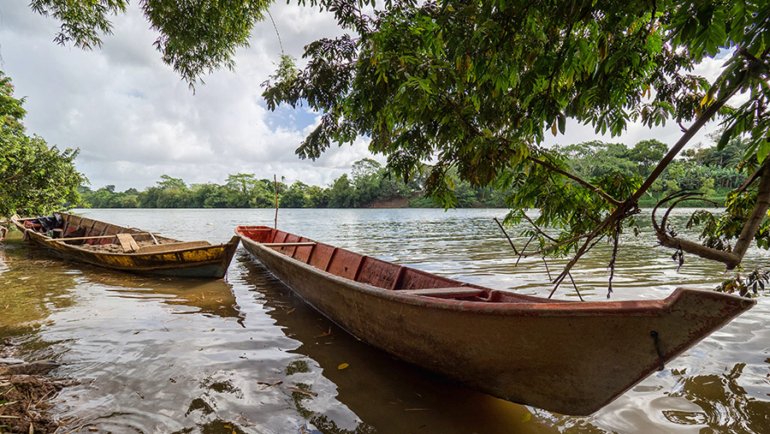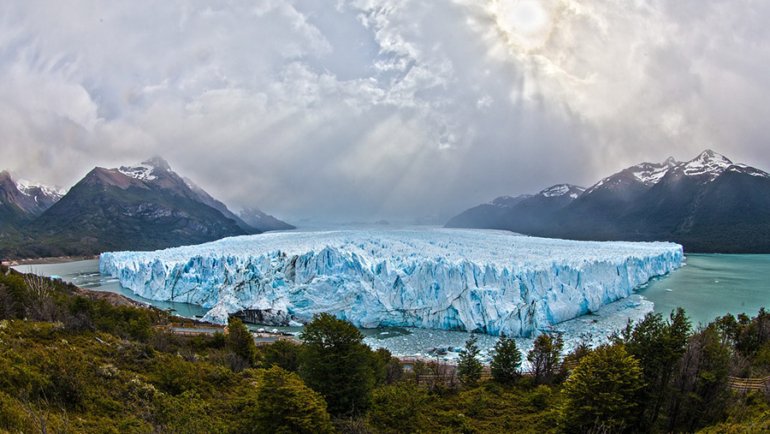Nestled between the Caribbean Sea and the mighty Andes, Colombia is a country of breathtaking landscapes, rich history, and vibrant culture. Known for its warm people, exquisite coffee, and infectious rhythms, Colombia has emerged from a troubled past to become a beloved destination that enchants visitors from around the globe.
From its lush rainforests and snow-capped mountains to its bustling cities and charming towns, Colombia’s diverse offering captivates the hearts of those who venture here. In this article, we explore 34 things that make Colombia unique and famous.
Natural Wonders
1. Amazon Rainforest
The Amazon Rainforest in Colombia, part of the world’s largest tropical rainforest, is a hotbed of biodiversity.
Home to thousands of wildlife species and indigenous communities who continue to live in harmony with nature, the Amazon Rainforest is a vibrant, living entity that encapsulates the awe-inspiring power of the natural world.
2. The Andes
The Andes Mountain range in Colombia, part of the longest continental mountain range in the world, is a sight to behold. From soaring peaks to verdant valleys, the Andes offer breathtaking vistas and a playground for outdoor enthusiasts.
3. Tayrona National Park
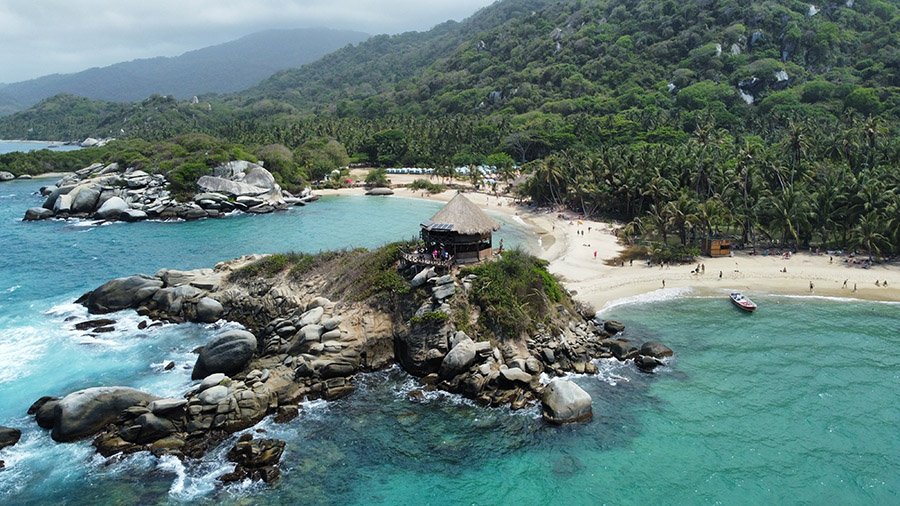
Tayrona National Natural Park is a slice of paradise on Colombia’s Caribbean coast. The park features beautiful beaches, mangrove swamps, and a tropical rainforest teeming with diverse flora and fauna. Its blend of natural beauty and archaeological significance make it a must-visit.
4. Caño Cristales
Caño Cristales, also known as “The Liquid Rainbow” or “The River of Five Colors”, is a marvel of nature. Located in the Serranía de la Macarena province, this river displays a striking palette of colors—red, blue, yellow, orange, and green—thanks to the aquatic plants and the clear water.
5. Nevado del Ruiz
Nevado del Ruiz, a volcano in the Andes, stands out with its snow and glaciers, a unique sight in a tropical country like Colombia. The area around the volcano, part of Los Nevados National Natural Park, is a sanctuary of biodiversity.
Historic and Touristic Landmarks
6. Cartagena’s Walled City
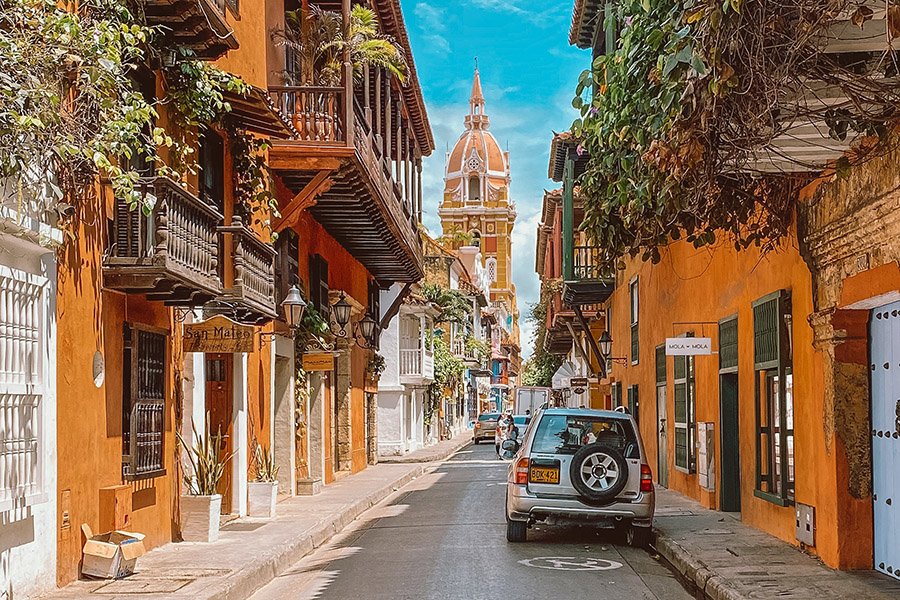
The Walled City of Cartagena, a UNESCO World Heritage Site, is a living testament to the city’s rich colonial history. Its cobbled streets, vibrant buildings, and timeless charm offer a step back in time.
7. Medellín’s Comuna 13
Once notorious as one of the most dangerous neighborhoods in the world, Comuna 13 in Medellín has transformed into a symbol of resilience and hope. The district is now known for its vibrant street art, community-driven initiatives, and innovative public transportation system.
8. Gold Museum, Bogotá
The Gold Museum in Bogotá houses one of the most significant collections of pre-Hispanic gold artifacts in the world. The museum offers a glimpse into the rich and diverse cultures that flourished in Colombia before the arrival of Europeans.
9. Salt Cathedral of Zipaquirá
The Salt Cathedral of Zipaquirá, an underground church built inside a salt mine, is a feat of engineering and a place of pilgrimage, attracting tourists and worshipers alike.
10. Ciudad Perdida
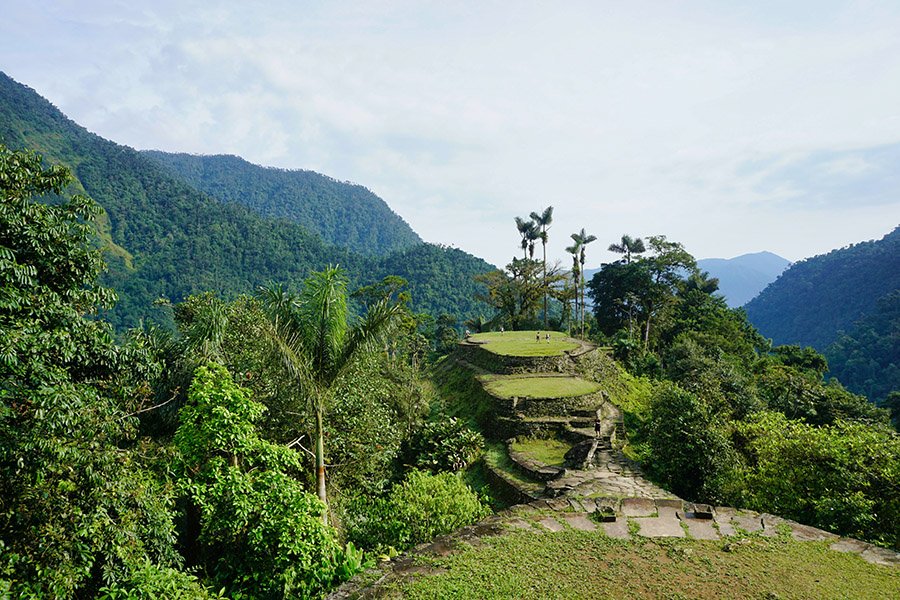
The ‘Lost City’, or Ciudad Perdida, is an ancient city in the Sierra Nevada de Santa Marta believed to have been founded around 800 CE, predating Machu Picchu by around 650 years. It’s a significant archaeological site, and reaching it involves an adventurous trek through the jungle.
Cultural Treasures
11. Literature
Colombia has contributed significantly to global literature, thanks in large part to Gabriel García Márquez, one of the most acclaimed authors of the 20th century. Known for his magical realist novels like “One Hundred Years of Solitude”, Márquez’s work continues to inspire readers worldwide.
12. Cumbia and Vallenato
Traditional Colombian music and dance genres like Cumbia and Vallenato have a profound impact on the country’s cultural identity.
They originated on Colombia’s Caribbean coast and reflect the country’s indigenous, African, and Spanish influences. These rhythms are infectious and integral parts of any Colombian celebration.
13. Coffee Cultural Landscape
The Coffee Cultural Landscape of Colombia is a UNESCO World Heritage site that reflects a centennial tradition of coffee growing in small plots in the high forest and the way farmers have adapted cultivation to difficult mountain conditions.
This region is also known for its “paisa” culture and the wax palm, Colombia’s national tree.
14. Colombian Spanish
Colombian Spanish is known for its clear pronunciation and is often referred to as one of the world’s most neutral Spanish accents. This feature, combined with Colombians’ reputation for politeness, makes the country an attractive place to learn Spanish.
15. Colombian Cuisine
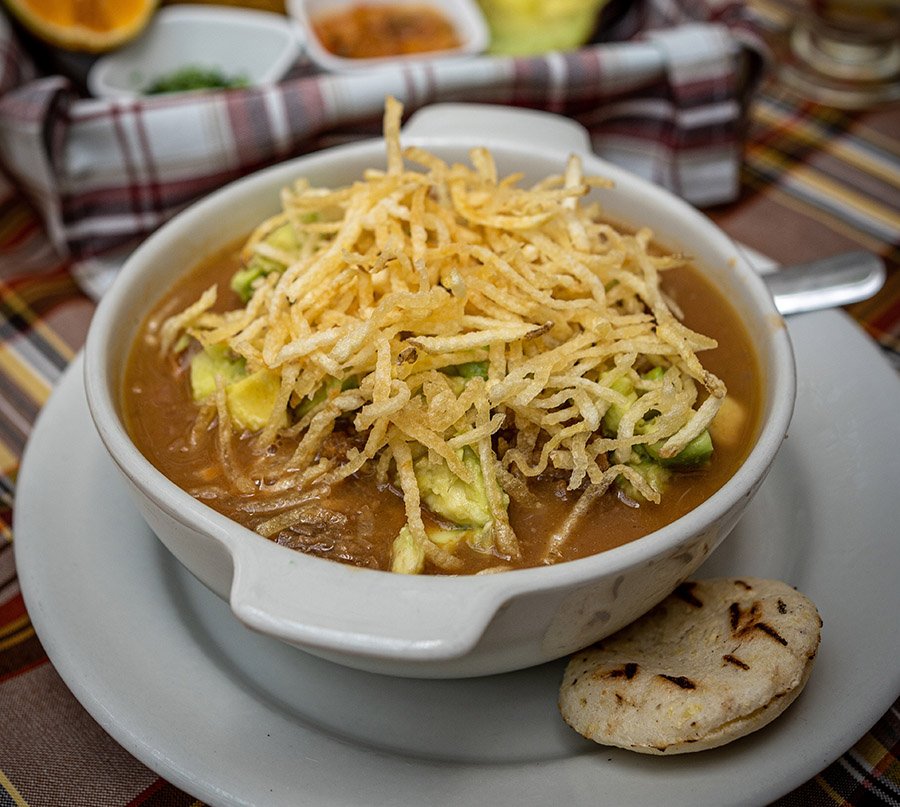
Colombian cuisine is as diverse as its geography and climate. Traditional dishes, each region with its own specialties, range from hearty stews like “Ajiaco” to unique fruits like “lulo” and “mamoncillo”.
Colombian food is a feast for the senses, with flavors that are as vibrant and diverse as the country itself.
Popular Food and Drink
16. Bandeja Paisa
Bandeja Paisa is perhaps Colombia’s most famous dish. This hearty platter comes loaded with different foods like beans, rice, chorizo, pork rind, avocado, plantain, and a fried egg. It’s a meal that satisfies and symbolizes the generosity of Colombian hospitality.
17. Ajiaco
Ajiaco is a traditional Colombian soup, particularly popular in Bogotá. It’s a hearty dish made with chicken, three varieties of potatoes, and flavored with a herb called “guasca”. The soup is typically served with capers, cream, and avocado.
18. Arepas
Arepas are a staple of Colombian cuisine. These versatile patties are made from cornmeal and can be grilled, baked, or fried. They can be enjoyed at any time of day, filled or topped with ingredients like cheese, meats, or scrambled eggs.
19. Colombian Coffee
Colombian coffee is famous worldwide for its high quality and distinct flavor. The country’s mountainous terrain and tropical climate create perfect conditions for coffee production.
Colombia is one of the world’s top coffee producers, and the industry plays a crucial role in the country’s economy.
Famous and Influential People
20. Gabriel García Márquez
One of the most significant authors of the 20th century, Gabriel García Márquez was known for his novels, short stories, and journalism. His most renowned book, “One Hundred Years of Solitude”, has been translated into more than 30 languages.
Márquez won the Nobel Prize in Literature in 1982, bringing global recognition to Latin American literature.
21. Shakira

Shakira is a globally successful pop singer and songwriter known for hits like “Hips Don’t Lie”, “Waka Waka”, and “Whenever, Wherever”. With her distinctive blend of Latin, rock, and Arabic musical styles, she has become one of the best-selling Latin artists of all time.
In addition to her music career, Shakira is recognized for her philanthropy work, particularly in education.
22. Fernando Botero
Renowned painter and sculptor Fernando Botero is known for his unique style, referred to as “Boterismo”, which depicts people and figures in large, exaggerated volume.
His works can be found in prominent museums around the world, and his sculptures adorn city squares in several major cities.
23. Pablo Escobar
Pablo Escobar, leader of the Medellín Cartel, was one of the most notorious drug lords in history. His life and the turmoil his empire caused in the 1980s and early 1990s have been the subject of numerous books and television series.
Despite his notorious legacy, the fall of his cartel and the efforts to overcome this past have greatly contributed to Colombia’s transformation into a safer and more prosperous nation.
Notable Inventions/Discoveries
24. Pre-Columbian Cultures
Colombia was the cradle of several significant pre-Columbian cultures, such as the Muisca and Tairona. The Muisca, famous for their intricate goldwork, are at the heart of the El Dorado legend – a mythical city of gold that has captivated explorers for centuries.
The Tairona, on the other hand, are known for their remarkable architectural legacy. The Ciudad Perdida, or “Lost City”, believed to be founded around 800 CE, remains as a testament to their ingenuity, revealing complex networks of tilled terraces, stone pathways, and plazas.
25. Discoveries in Flora and Fauna
Colombia is a treasure trove of biodiversity, boasting the highest number of bird species in the world. With its wide variety of ecosystems, from the Andean peaks to Amazonian rainforests, the country is home to a dazzling array of species, many of which are endemic.
New species are discovered regularly, enriching our understanding of the natural world and emphasizing the importance of conservation.
Economic Contributions
26. Coffee Production
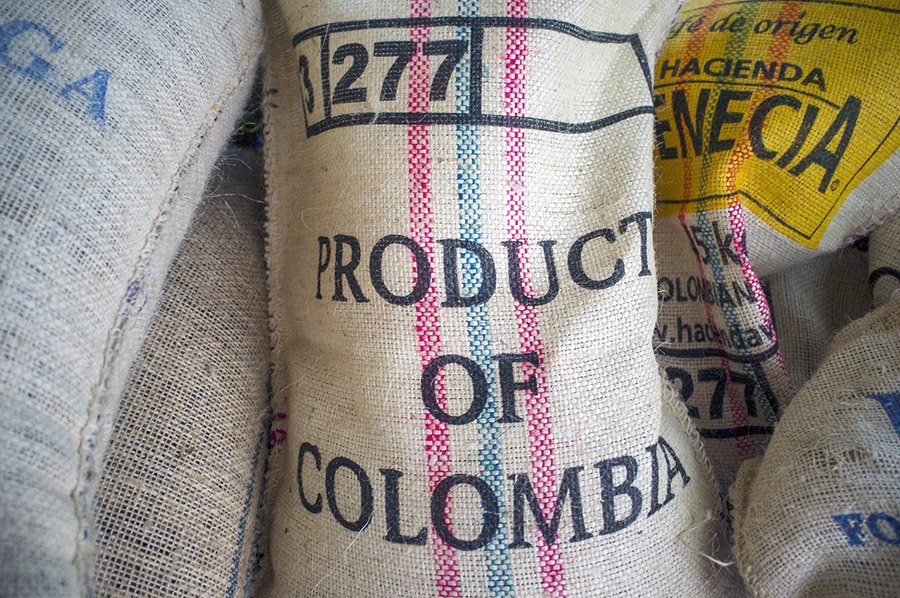
Colombian coffee is not just a product; it’s a symbol of the nation. With its fertile soils, high altitudes, and favorable climate, the Colombian Coffee-Growers Axis produces some of the best coffee beans in the world.
This region, now a UNESCO World Heritage site, showcases the cultural landscape of coffee production, characterized by paisa architecture and wax palms, Colombia’s national tree.
Coffee exports remain a crucial part of Colombia’s economy and represent the hard work of over 500,000 coffee growers across the country.
27. Emerald Mining
Known for their superior quality and intense green color, Colombian emeralds are coveted worldwide. Colombia’s emerald mines, particularly in Boyacá and Cundinamarca, produce about 70-90% of the world’s supply.
These precious gemstones play a significant role in the national economy and contribute to the global gemstone market.
Sports and Recreation
28. Football and Cycling
Colombians are passionate about sports, particularly football and cycling. Football, the national sport, has a devoted following, with successful teams at both the domestic and international levels.
Matches between local clubs often turn into vibrant social gatherings, reflecting the sport’s deep-rooted cultural significance.
Cycling, on the other hand, has gained prominence due to the success of Colombian cyclists in international competitions, including the Tour de France and Giro d’Italia.
Colombia’s rugged terrains provide the perfect training ground for cyclists, fostering talents that shine on the world stage.
Education and Innovation
29. Progress in Education
Colombia’s efforts to improve education over the past few decades have yielded promising results. The country has expanded access to education, reduced illiteracy rates, and improved the quality of education at all levels.
Initiatives such as “Computers to Educate”, which aims to integrate information and communication technologies into public schools, and the Bilingual Colombia Program, designed to improve English proficiency, reflect the country’s commitment to education.
In recognition of these efforts, the World Bank has named Colombia’s education system as one of the most effective in Latin America.
Famous Celebrations/Festivals

The Carnaval de Barranquilla is a vibrant, four-day festival that precedes Lent. This UNESCO-recognized event celebrates Colombia’s multicultural heritage through parades, music, dance, and costumes.
The festival’s highlights include the Battle of the Flowers, the Grand Parade, and the Orchestra Festival, showcasing the country’s rich cultural diversity and creativity.
31. Medellín Flower Festival
Every August, the city of Medellín bursts into color for the Medellín Flower Festival. The festival celebrates the region’s flower-growing industry, with events ranging from a horse parade and classic car parade to the Desfile de Silleteros, where locals display intricate floral arrangements on large silletas (wooden carrying devices) on their backs.
32. Christmas and New Year Celebrations
Christmas and New Year in Colombia are times of joy and celebration, marked by unique traditions. The Night of the Little Candles, or “Noche de las Velitas”, kicks off the holiday season, with people lighting candles and lanterns in honor of the Virgin Mary.
The “Old Year” doll tradition involves creating a large doll, symbolizing the old year, which is filled with fireworks and burned at midnight on New Year’s Eve, symbolizing the letting go of the past and the welcoming of the future.
33. Cali Fair
The Cali Fair is a celebration of salsa music, dance, and culture. Held in late December, the fair features music concerts, dance shows, a salsa marathon, and a parade. It’s a time when Cali, known as the “World Capital of Salsa”, truly lives up to its name.
34. Festival Iberoamericano de Teatro
As one of the biggest theater festivals in the world, the Festival Iberoamericano de Teatro of Bogotá brings together theater groups from around the world. It’s a celebration of creativity and artistic expression, with performances ranging from drama and comedy to circus and dance.
Final Thoughts
Colombia is a captivating country, boasting awe-inspiring natural wonders like the Amazon Rainforest and the Andes. Its historic landmarks, including Cartagena’s Walled City and the Salt Cathedral of Zipaquirá, showcase its cultural richness.
Influential figures like Gabriel García Márquez and Shakira have made significant global contributions. The country’s economic prowess lies in its coffee production and emerald mining. Colombia’s commitment to education and innovation has led to commendable progress.
Festivals like the Carnaval de Barranquilla and the Cali Fair exude vibrant energy. With diversity, determination, and creativity, Colombia’s story continues to enchant, leaving a lasting impression on all who explore its wonders.
